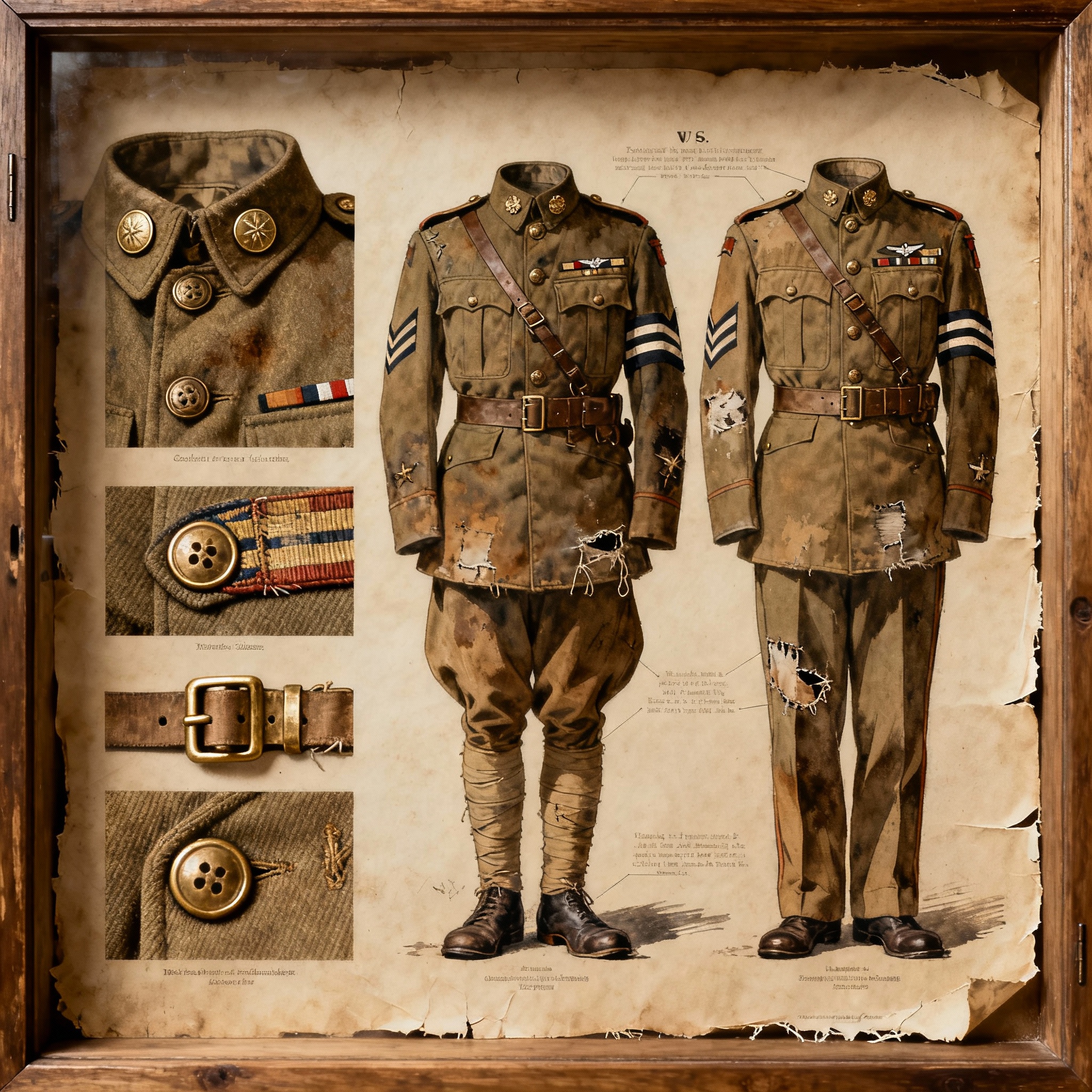
Inside the WWI US Uniform: History, Variants, and Collecting Tips for Enthusiasts
Published on Sep 28, 2025
Introduction:
Did you know that some WWI American soldiers wore up to four different types of uniforms during the war?
From muddy trenches to victory parades, WWI US uniforms weren't just clothing — they were tools of identity, function, and survival. Whether you're a collector, reenactor, or just fascinated by the gear that shaped history, understanding these uniforms is key to unlocking a deeper appreciation of America’s military heritage.
This guide breaks down everything you need to know about US Army WWI uniforms, including variants like the WWI US Navy uniform, how many uniforms WWI soldiers actually received, and how WWI gear compares to World War II American uniforms. Along the way, we’ll share tips, avoid common mistakes, and look at how today’s enthusiasts keep the legacy alive.
H2: The Evolution of the WWI US Uniform
Before WWI, the US military had limited involvement in large-scale international wars. That changed drastically in 1917 when America entered the Great War. Suddenly, there was a massive need for practical, durable, and standardised military clothing.
H3: Key Elements of the WWI US Army Uniform
A typical US Army WWI uniform included:
- M1912 or M1917 Wool Tunic: High-collared, with bronze buttons featuring the US eagle.
- Wool Breeches: Tight-fitting trousers for better mobility.
- Puttees: Long cloth wraps worn from ankle to knee for leg protection.
- Brogan Boots: Heavy, hobnailed boots.
- Campaign Hat: Wide-brimmed, felt hat — iconic and practical.
- Gas Mask Bag & Web Gear: Vital for trench warfare.
- Greatcoat: Issued for colder weather.
Over time, new materials and designs were introduced, like the M1917 helmet modelled after the British Brodie helmet.
H3: WWI US Navy Uniform vs. Army Uniform
The WWI US Navy uniform differed significantly:
- Colour: navy blue wool for enlisted, white for summer or tropical deployments.
- Design: Traditional sailor blouse (jumper) with flap collar and bell-bottom trousers.
- Insignia & Ratings: Embroidered on sleeves.
While the Army focused on practicality in the trenches, the Navy prioritised tradition and ease of movement aboard ships.
H2: Collecting and Reenacting – Actionable Tips and Common Pitfalls
For collectors or living history enthusiasts, original WWI US uniforms are prized possessions. But the hobby requires attention to detail and historical accuracy.
H3: How Many Uniforms Did WWI US Soldiers Get?
This is a frequently asked question. The answer? It depends.
- Basic Enlisted Kit Included:
- 1 service tunic
- 2 pairs of breeches
- 1 overcoat
- 1 campaign hat
- Undergarments and accessories
However, soldiers often received additional clothing for different climates, training, or ceremonial duties.
Fun Fact: Some soldiers reported being issued up to 4 different sets over the course of their deployment due to wear, climate, or reassignment.
H3: Actionable Steps to Start Your Collection
If you're looking to collect WWI US uniforms, follow these steps:
1. Start with Research
- Learn the difference between WWI and World War II American uniforms
- Use books, forums, and reputable militaria websites
- Attend military shows or reenactments
2. Prioritize Condition and Authenticity
- Look for clear stamps (e.g., “US QMC” with dates)
- Original buttons, stitching, and wool quality matter
- Avoid moth damage or poorly stored items
3. Verify Provenance
- Ask sellers for background info
- Compare with reference materials or museum examples
4. Budget Wisely
- WWI jackets: $150–$500, depending on condition
- Complete kits can go over $2,000
H3: Common Pitfalls to Avoid
- Mixing Eras: Don’t confuse WWI gear with World War II American uniforms — there are distinct differences in cut, color, and equipment.
- Reproductions vs. Originals: Repro gear is great for reenacting, but should be clearly labeled in collections.
- Overpaying: New collectors often pay too much. Always compare prices across multiple sources.
H2: WWI US Uniforms in Modern Times – Trends & Preservation
H3: Growing Interest in Living History
With rising interest in WWI centennials and historical reenactments, more people are wearing authentic-style uniforms to honor the past. Enthusiasts often recreate entire field kits down to mess tins and trench whistles.
Modern Trend: Combining original WWI US uniforms with safe, wearable reproduction items for public events. This balances preservation with participation.
H3: Museums & Online Communities
There’s a surge in digital archiving and display of military uniforms:
- YouTube channels now showcase full gear reviews
- Forums like the US Militaria Forum offer expert advice
- Museums provide virtual tours and high-res photos of original WWI US uniforms
Conclusion: Preserve the Legacy, Wear the History
The WWI US uniform is more than fabric and thread—it's a symbol of sacrifice, courage, and American history. Whether you're collecting, reenacting, or researching, there's always more to discover.
From learning how many uniforms WWI US soldiers got to identifying the subtle differences between WWI US Navy uniforms and army gear, the journey into militaria is endlessly rewarding.
